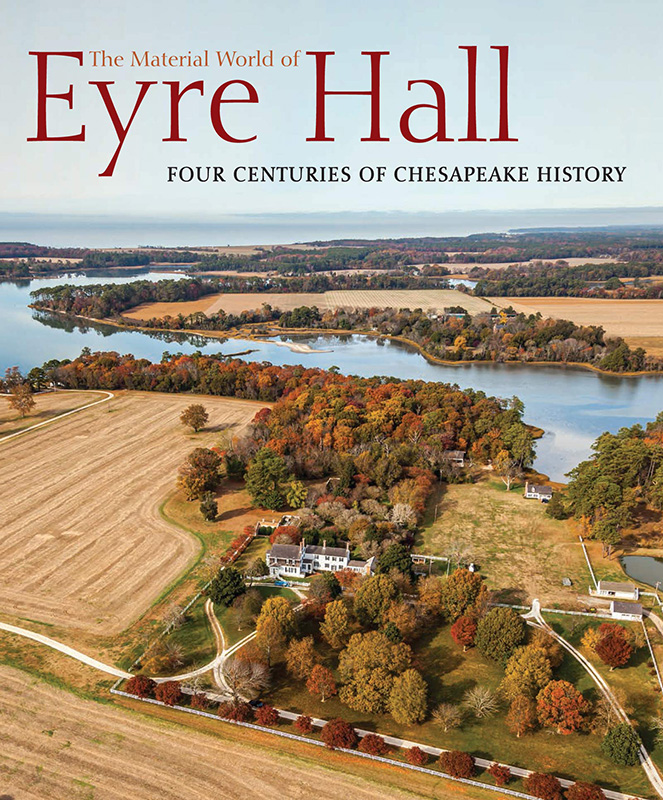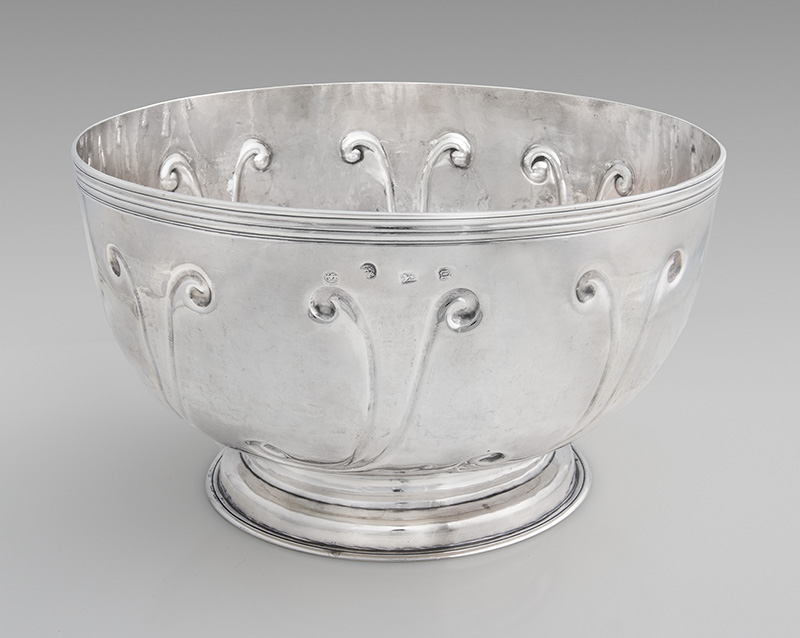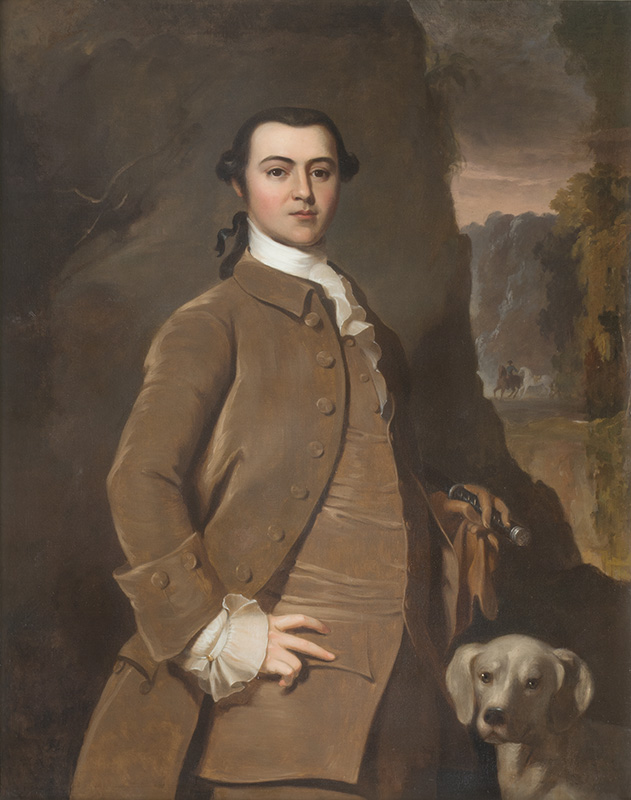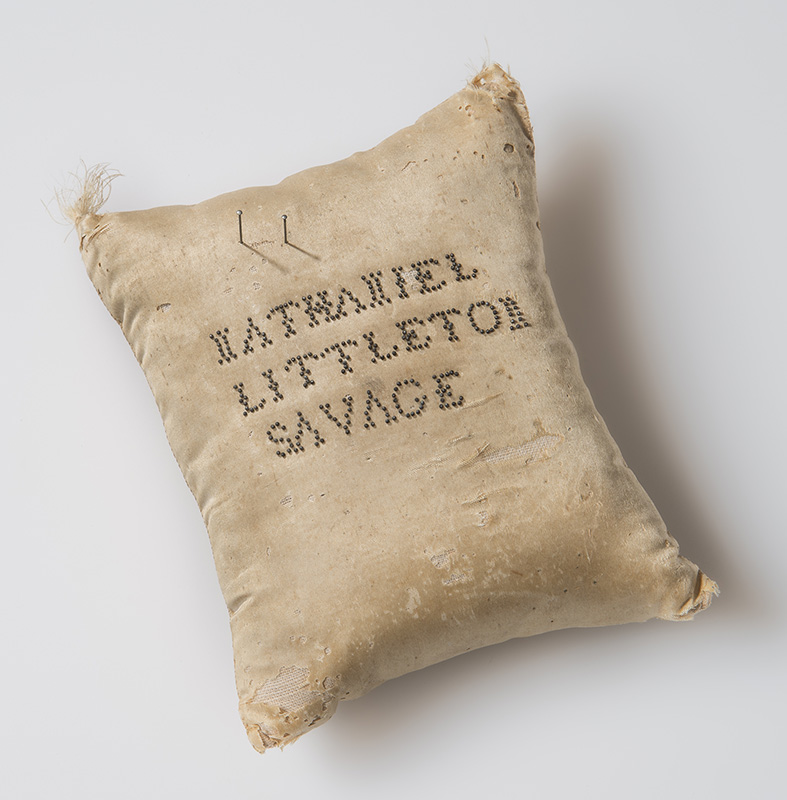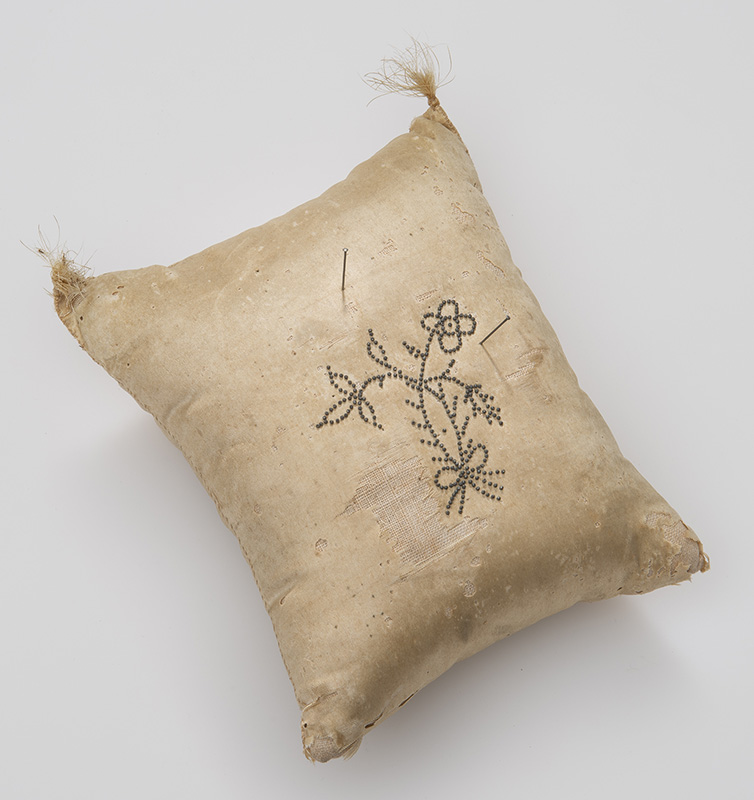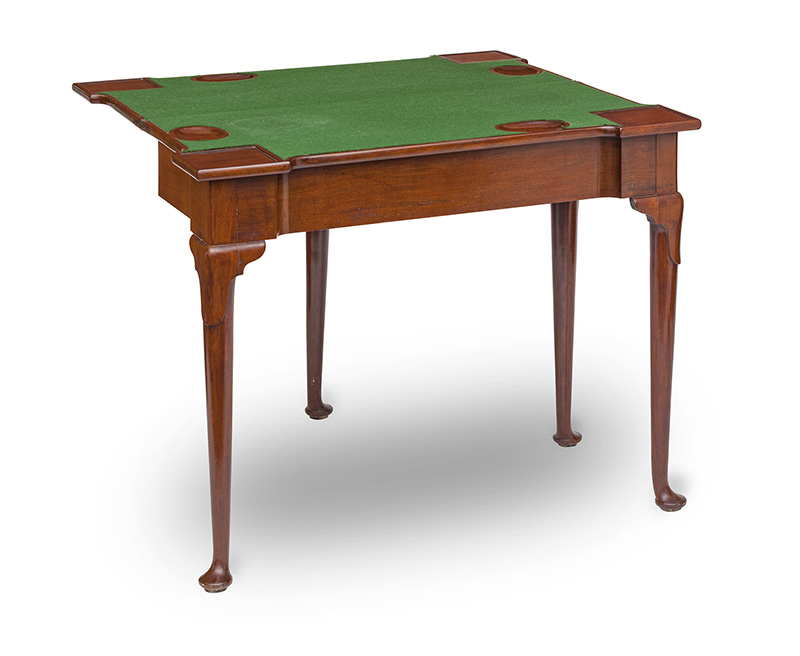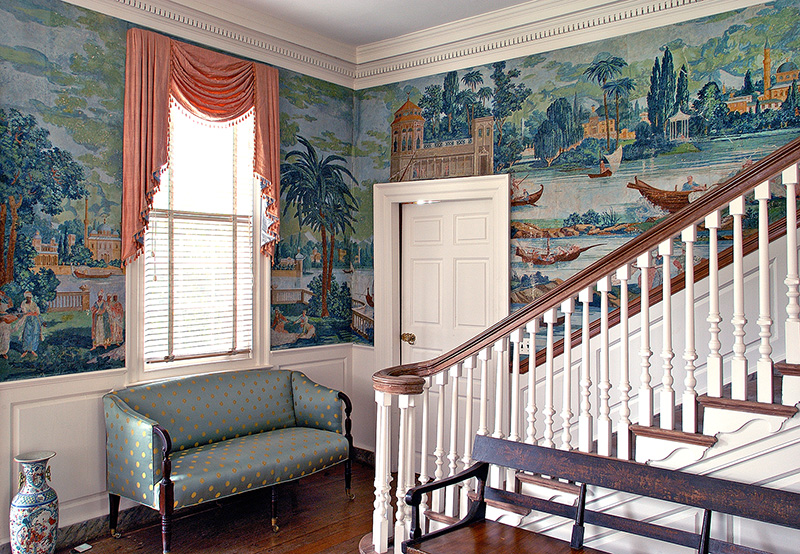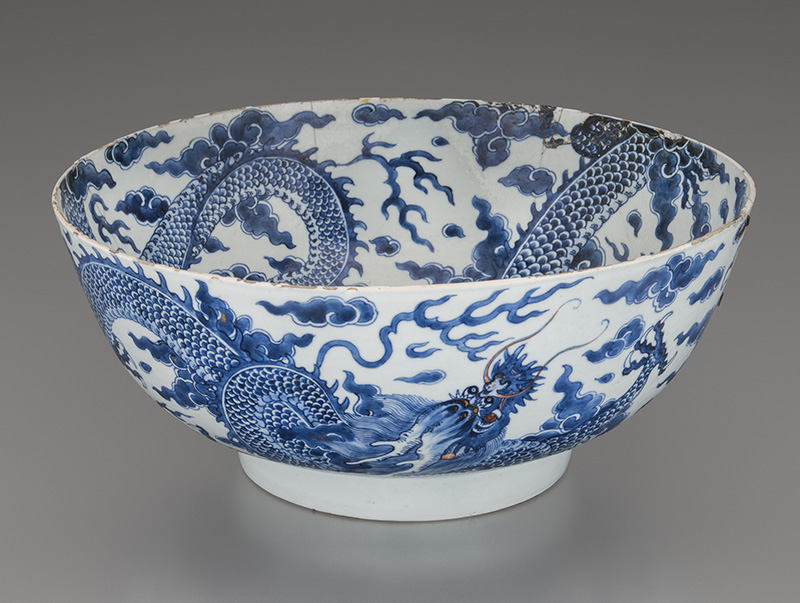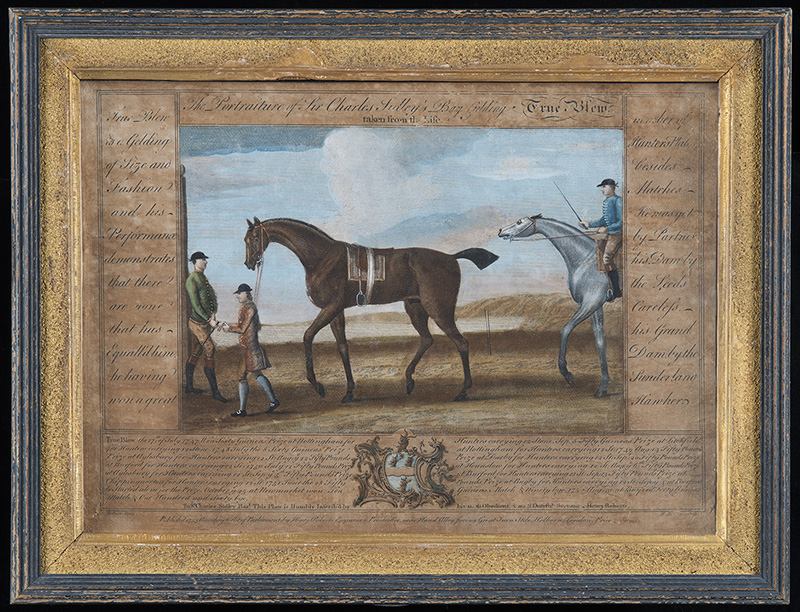The Wonders of Eyre Hall: Illuminating the Treasure of Virginia’s Eastern Shore
by J. Thomas Savage, Jr.
With the publication of The Material World of Eyre Hall: Four Centuries of Chesapeake History, Eyre Hall on Virginia’s Eastern Shore (figure 1) steps to the front of the line as one of America’s best-documented historic properties. Most historic houses are lucky to have a monograph authored by a single scholar. The approach for the Eyre Hall book was to unleash 24 scholars, most seasoned and some in-process graduate students, to record in all its many dimensions the totality of an extraordinary survival, a house completed in 1759 on land acquired in 1754 by a family who settled on the Eastern Shore at least a century earlier. The methodology explores the history, architecture, landscape, and collections of Eyre Hall within the context of the diverse lives lived both within and outside the great house. The combination of historical biography and more recent oral histories and reminiscence gives context to the 450-page volume and heightens its powerful “voice.”
From inception to completion, the present owner, H. Furlong Baldwin, who was preceded by nine generations of stewards at Eyre Hall, provided the vision for the book. Upon inheritance from his mother Margaret Eyre Taylor Baldwin in 1979, Furlong confessed that he “began to suspect I was the custodian of a treasure larger than any preceding generation had recognized.” From a wide network of friends, professionals, and experts he selected Carl Lounsbury, the retired Senior Architectural Historian at Colonial Williamsburg, to enlist, coordinate, and edit the powerhouse of knowledge that produced the collective research project made possible by Furlong’s largesse. Baldwin inherited a legacy and left it far richer and better documented for his presence. This volume is his present to us all.
For my mini-synopsis in these pages I decided to feature the work of several decorative arts historians who have documented, clarified, and sometimes reinterpreted the multigenerational collections found within the great house at Eyre Hall. While space prevents a discussion of the architectural evolution of the house and its successive generations here, I urge the reader to acquire the book to place the objects mentioned within a wider and well-documented context.
Mark Letzer’s essay and catalogue of silver describes the earliest and rarest object in the Eyre Hall collection, a silver punch bowl (figure 2) hallmarked for 1692–93 by London silversmith John Sutton. Family lore maintains that the punch bowl was “won” by an Eyre-owned racehorse by the name Morningstar, who was meant to have “quaffed with relish” champagne from his trophy following his efforts. A more likely tradition suggests that it was bequeathed to a young Severn Eyre (1690–1728) in 1704 by his relative Bridget Foxcroft. Decorated in the auricular style favored in northern Europe, the punch bowl is one of only two non-ecclesiastical pieces of 17th-century silver with a Virginia history.
Laura Pass Barry, who catalogued the Eyre Hall paintings and miniatures, was somewhat surprised to discover how well-traveled several of the pictures in the collection had been, some leaving and then returning to Eyre Hall. Two cases involve the likenesses of Severn Eyre (1735–1773), son of Littleton Eyre the builder, that now have pride of place in the parlor and library of Eyre Hall. The earlier of the two can be firmly attributed to Benjamin West (figure 3) and indeed the 1855 will of John Eyre, the sitter’s son, mentions “the portrait of my father Severn Eyre, taken by Benjamin West.” Dated 1757–59, Severn’s portrait is the earliest likeness in the family collection and its commission from West likely resulted from familial, social, and business connections in Philadelphia. A very similar portrait of the same date by West is of Thomas Mifflin of Philadelphia, son of Eyre’s first cousin, Ann Eyre Mifflin Roberts. Assumed to have remained in the house throughout its history, early photographs from the 1890s do not show the portrait, however, and a 1922 reference to the painting’s ownership cites family member Robert Barraud Taylor III of Norfolk. His death in 1935 likely prompted the return of the portrait to the Eyre family seat.
In 1850, Thomas Sully copied the West portrait (figure 4) suggesting it had returned to Philadelphia where it was painted originally. Sully’s accounts record “Copy from an old picture” of “Mr. Ayers” noting the commission was for “Mr. Savage.” This refers to William Littleton Savage of Philadelphia, brother of Mary Burton Savage whose husband William Littleton Eyre was a grandson of the sitter. The Sully commission likely arose from the expectation that William Littleton Eyre and his wife, Mary Burton Eyre, would inherit Eyre Hall from his childless uncle John Eyre. But William Little predeceased his uncle two years after the portrait’s commission, and ownership of the portrait as well as the house passed to their son Severn upon John Eyre’s death in 1855.
Discovered packed away in a long unopened trunk in Eyre Hall’s attic is a pin pillow (figures 5 and 6) that probably returned to Eyre Hall in the 19th century as a memento of the premature death of Nathaniel Littleton Savage (1790–1795), brother of Maria who would marry Severn Eyre Parker. Author Neal Hurst suggests this is the earliest textile object to survive within the family and documents the practice of making pin pillows for new mothers since most infant clothing in the period was fastened with pins. Often beautifully decorated, these tiny objects might incorporate initials, floral designs, birth dates, or sayings like “Welcome Little Stranger.”
Furniture historian Sumpter Priddy astutely notes that the multi-generational collection of furniture at Eyre Hall is shaped not only by taste but by business interests. Not surprisingly, the colonial era saw a reliance on Chesapeake artisans, but, in the 19th century, patronage shifted to Baltimore and Philadelphia with several stylish Federal objects procured from Norfolk, all centers where kinship and business connections were prolific.
Taking pride of place in the entrance hall today is a Williamsburg-made card table (figure 7), one of a pair attributed to the shop of English-born cabinetmaker Anthony Hay. Littleton Eyre’s business partner Isaac Smith kept a record of expenses charged against Littleton’s estate, including a payment of two pounds to “Anthy Hay for a Card Table” on October 30, 1768. While the table does not appear in Littleton Eyre’s estate inventory of 1769, suggesting it had not yet arrived, an appraisal taken after his son Severn Eyre’s death in 1774 lists a card table at two pounds as well as a pair of card tables valued together at six pounds. Priddy notes that Hay seems to have retired from the bench in 1767 when he buys the Raleigh Tavern, but work continued under the oversight of cabinetmakers Benjamin Bucktrout, Edmund Dickinson, William Kennedy, and Hay’s enslaved cabinetmaker “Wiltshire” who appears in his estate inventory in 1771.
Trust Governor Margaret Pritchard chronicles Ann and John Eyre’s 1817 decision to install a French scenic paper (figure 8) in the stair passage at Eyre Hall where it likely replaced at least two generations of paper hangings. The 1769 inventory includes “a parcel of stampt Paper for hangings,” and paint conservator Susan Buck found a fragment of blue paper under the scenic that probably dates from the early 19th century. Ann and John selected Joseph DuFour’s “Les Rives du Bosphore” (The Banks of The Bosphorus), depicting exotic Turkish architecture, costume, and landscape. The Ottoman Empire and the storied city of Constantinople were of great interest in the period given the Russo-Turkish War (1806–12). Another factor in their decision may well have been the depiction of lush vegetation along romantic waterways, as the stair passage provided the primary access to the ever-expanding garden in which the Eyres would add a greenhouse in 1819. Although Norfolk upholsterer William Barron advertised “Les Rives du Bosphore” in his inventory, the Eyres turned to Baltimore’s William Gilmor, son of vastly rich merchant Robert Gilmor, for their purchase. The cost is not recorded, but non-repeating panorama papers generally ranged between $10–$40 depending on the complexity of design. Their choice was one of the more expensive as “Les Rives du Bosphore” required 1599 blocks to print the 70 different colors found throughout the scenes.
Rob Hunter and Angelika Kuettner took on the analysis of ceramics in the house including the display cupboard of archaeological finds recovered from under the north porch floor in 2000 by archaeologists from Colonial Williamsburg. One of the broken plates recovered is from the Chinese export service possibly ordered to celebrate the marriage of John and Ann Eyre in 1800. Shortly thereafter, a secondary service of blue and white Chinese export in the popular “Canton” pattern seems to have been procured. The most impressive early ceramic is a vast Chinese export punchbowl (figure 9) of 1730–50 lavishly decorated in underglaze blue with a Chinese dragon chasing pearls amidst billowing waves and coral. Costly punch bowls of porcelain spoke to sociability and ritual drinking of alcoholic punch while serving as objects of conspicuous display.
Of the forty prints described as “pictures” in the 1774 inventory of Severn Eyre, 14 survive with histories at Eyre Hall: six racing prints, four English landscapes, and four of Roman ruins. Katie McKinney notes that the original publication dates of these prints are between 1745 and 1754, although some might have remained in publication for a longer period. Of great rarity are the equestrian prints, including “The Portraiture of Sir Charles Sidley’s Bay Gelding True Blew” (figure 10) published by Henry Roberts in London in 1753. All six retain their pear-tree frames with sand gilt liners.
Like the house itself, it is the ensemble that makes this book so rich in content. For the decorative-arts-lover there are 152 unique catalogue entries documenting objects and library collections. But the substantive and well researched essays by Carl Lounsbury, Cary Carson, Will Rieley, and George McDaniel place all of the objects within an extraordinary narrative of 350 years of one special place and the intertwined lives of landowners, enslaved people, craftsmen, and servants.
Thomas Savage, Jr. is the Director of Educational Travel and Conferences at the Colonial Williamsburg Foundation. The Material World of Eyre Hall: Four Centuries of Chesapeake History is published by Maryland Center for History and Culture and is available at shop.mdhistory.org.
A print version of this article was published in The Magazine of the Decorative Arts Trust, one of our most popular member benefits. Join today!

